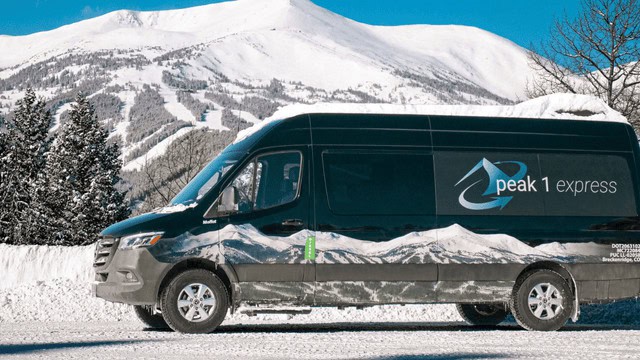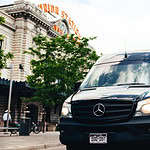What is the Avalanche Danger to Cars on Colorado Highways?
Driving down curvy mountain roads may not be as scenic and soothing as it appears on television. You may picture a clear, windy road through the Rockies free of ice and traffic, with snow-dusted pine trees lining the interstate. However, this couldn’t be further from the truth. There are many dangers while driving on Colorado highways during the winter season, and this post is to focus specifically on avalanches.
In order to be safest during an avalanche risk, one must first understand what an avalanche is and what causes them. An avalanche is defined as a mass of snow, ice and rocks falling rapidly down a mountainside. Additionally, there are multiple types of avalanches. According to the Colorado Avalanche Information Center, CAIC, the most dangerous type of avalanche is a slab avalanche, which can be up to two feet deep and range the size of half of an American football field, reaching speeds of over twenty mph in just a few seconds. An avalanche is most often caused by a chunk of snow becoming loose, tumbling down the mountainside, and knocking larger chunks of ice and snow loose on it’s way down.
Cars on Colorado highways run the risk of being caught and buried in an avalanche every time they travel into the mountains, regardless of the avalanche mitigation work crews may have done. Automobile drivers are not the only people that are at risk of an avalanche. Skiers, snowboarders, snowmobilers, hikers, and any other mountaineering activity also run a high risk of being caught in an avalanche. The following information is a comprehensive guide to keep you safest whether you’re making perfect turns in that deep backcountry powder, or heading on I-70 to your favorite Colorado mountain town.
Risk Levels
There are five levels of avalanche risk, which can be found by searching the avalanche forecasts. The lowest level, Level 1, one twentieth (1/20) of the snowpack is considered weak. The fraction doubles in risk at each level. Therefore, Level 2 has one tenth (1/10) of the snowpack being estimated as weak, and so forth. Interestingly, approximately 56% of all avalanche fatalities are during Level 3. Maybe this is because Level 3 rates avalanche risk at only “considerable”, and those who aren’t fully prepared still venture out during these times.
Gear You Will Need in your Vehicle
The only thing you can do to prepare yourself for a potential avalanche while driving is pack your car full of survival essentials prior to your trip. If you haven’t yet, check out our latest blog post that outlines the best precautions one can take for winter travel. Make sure you pack a small shovel, extra winter clothing and boots, as well as some unperishable food items. If you happen to get buried in your car in an avalanche, be sure to turn your car off immediately so carbon monoxide doesn’t build up. Take advantage of the fact that your vehicle has a horn and honk it every 10 minutes or so to help rescuers find you. If you’re lucky enough to have cell phone service, you can call 911 and assistance will be able to get to you sooner.
Gear You Will Need in the Backcountry
When it comes to safety, price should not dissuade you from being as protected and safe as possible. For mountaineering activities you will first need an avalanche transceiver, which sends a beacon to search and rescue beacons to lead teams to one of their mates who is buried after being caught in a slide. These beacons are not instinctive and require extensive knowledge on how to use them to be as effective as possible, so read up before you head out. Next, you’ll need a snow shovel for testing the snow conditions as well as digging out victims of an avalanche. A probe is also an essential tool, as it is used to poke and prod the snow to test conditions as well as search for buried victims. You could also invest in a manually deployed avalanche airbag, which is filled with a high volume of CO2 helping to raise you toward the top of the debris field. An Avalung pack is also an extremely useful item as it is a breathing apparatus to allow the venturer trapped under the snow to breathe while his or her companions rescue.
The only thing you can do to avoid fatalities in an avalanche is be prepared. For additional information on avalanches and avalanche safety, Colorado Mountain College offers classes in multiple locations including Aspen, Breckenridge, Edwards, Glenwood Springs, Leadville, Spring Valley, and Steamboat Springs. Additionally, top rated books for Avalanche safety are “Staying Alive in Avalanche Terrain” by Bruce Tremper, “Avalanche Essentials: A Step by Step System for Safety and Survival” by Bruce Temper, and “Snow Sense: A guide to Evaluating Snow Avalanche Hazard” by Doug Fesler and Jill A. Fredston.
To avoid the risks of driving in Colorado’s Rocky Mountains during the snowy season, call Peak 1 Express. Our experienced drivers will get you where you need to go at a great rate.
*Featured image courtesy of Summit Daily.
Amber Boutwell is a published Denver photographer who loves capturing nature and food. She shoots with natural light but has a deep love for dark skies. When she’s not on mountaintops chasing the Milky Way, she’s managing the great brands behind AVA and The Outlaw Group as their Marketing Manager. She’s been known to quote Joe Pesci, over-kiss cats, enthusiastically eat cheese, and return pugs.
Her motto:
“Seek out places where the Wi-Fi is weak, the views are stunning, and don’t forget the snacks.”







